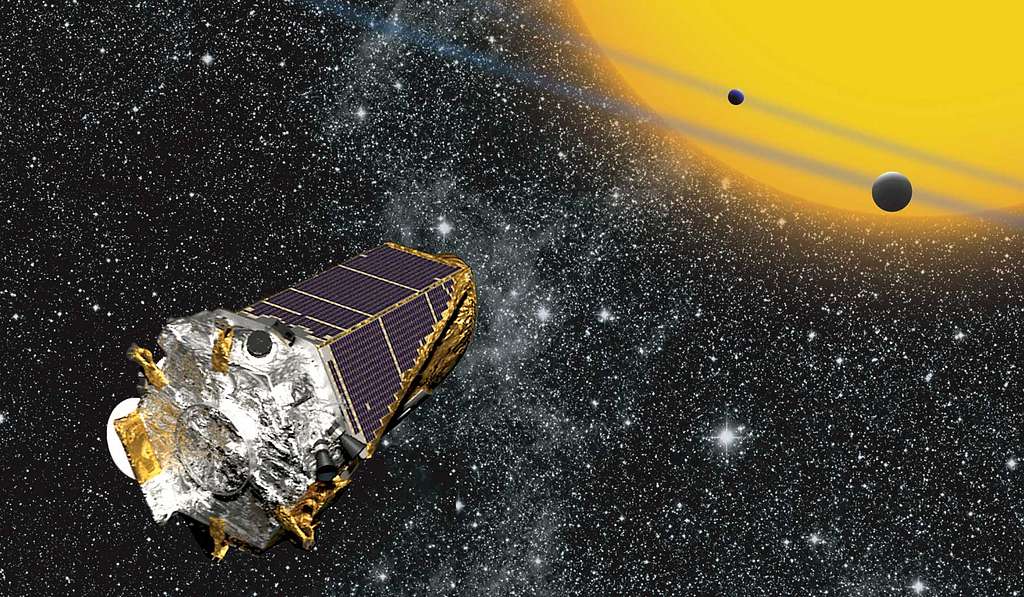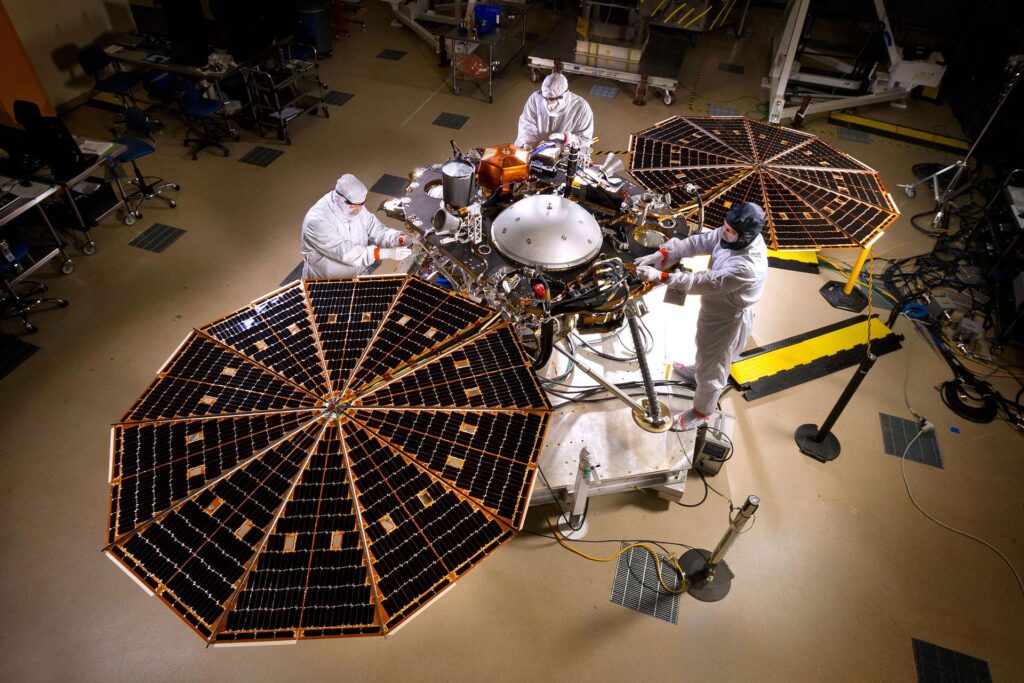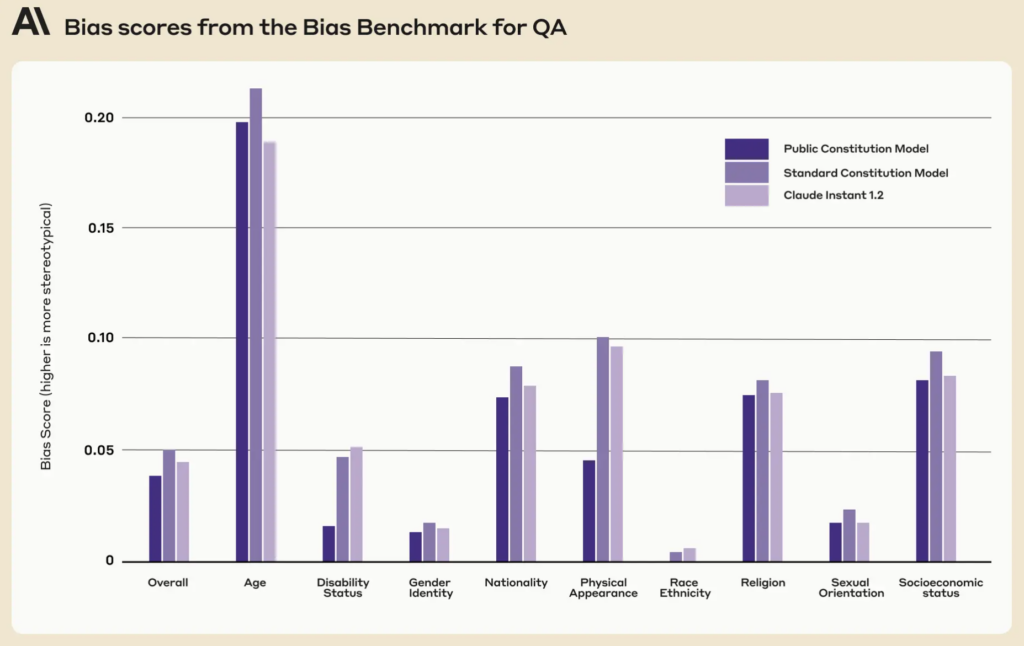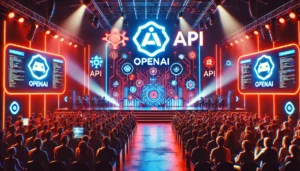AI and ML have long transcended the boundaries of science fiction, where they were once only imagined as tools for space colonization and interstellar exploration.
With recent missions to the Martian surface, SpaceX’s development of reusable super-heavy rockets, and research in autonomous AI robotics, we now stand on the cusp of a new era in space exploration.
Recent research has paved the way for AI-integrated robots to mine materials directly from the planetary surface and build structures capable of safely housing humans, complete with oxygen supplies.
Innovative research on ‘constitutional AI’ guided by democratically sourced opinions might provide a solution for space governance, enabling humanity to ‘export’ effective governance models to other planets.
Rather than colonizers being tasked with construction, they might simply walk into a liveable, near-complete facility and make themselves at home. AI-maintained constitutions would support societal functions that live and grow as the colony progresses and evolves.
Exoplanet discovery with AI
Exploring exoplanets – planets outside our solar system – is a critical step in our quest to understand the cosmos and potentially identify habitable worlds.
While Mars is a stepping stone toward colonizing exoplanets, exoplanet identification and research are helping us understand more about Earth and why it’s the ‘chosen one’ for harboring advanced lifeforms.
The Kepler Space Telescope launched in 2009, was pivotal in further exoplanet research. Its primary mission was to observe over 150,000 stars, identifying exoplanets by detecting the minute dimming of starlight as planets transited or passed in front of their host stars.

This mission, spanning from 2009 to 2013, led to the discovery of thousands of exoplanets, but the sheer volume of data collected by Kepler was exceptionally tough to analyze using traditional statistical methods.
The introduction of AI, particularly the deep neural network named ExoMiner, enabled researchers to sift through years of data from space telescopes like Kepler, enabling the identification of new planetary bodies with remarkable precision.
In 2021, ExoMiner validated 301 new exoplanets. The Kepler mission, in its entirety, was incredibly successful, resulting in the confirmation of 4,888 exoplanets as of December 6, 2021.
Kepler’s legacy is profound – after nine years in deep space, it provided evidence that our night sky is filled with billions of hidden planets, many of which may be capable of supporting life in the past, present, or future.
Laying the foundations for colonization
For humans to successfully inhabit other planets, they’ll need ample resources – including oxygen and raw materials. One option is to haul resources to space via rocket, which has become increasingly possible with SpaceX’s Falcon Heavy system.
However, with each mission costing billions of dollars, it would be considerably more efficient to synthesize and assemble those resources in situ using autonomous robots and research labs sent to the planet before humans arrive.
Robots could set about building human-ready, pre-fabricated infrastructure for colonizers. Infrastructure could be constructed and rigorously tested to ensure safety prior to putting lives on the line. It might even be possible to mine resources directly from the surface of the planet in question.
Researchers have already put forward a multitude of theoretical construction methods for building infrastructure on planets like Mars, including for NASA’s recent 3D Printing Habitat Challenge, which charged designers with the task of building practical shelters with built-in critical survival mechanisms. Ideas included building shelters built into the side of cliffs or 3D-printed shelters that used ice as a construction material.

Recent advancements in AI, ML, and robotics would be able to support off-planet construction, perhaps even handling the end-to-end building process autonomously.
For instance, a Chinese research team has successfully utilized AI to create oxygen on a simulated Martian surface. The AI robot, as detailed in the study published in Nature Synthesis, was tasked with developing a catalyst from Martian rock samples, which is essential for accelerating the oxygen production process from water.
This resulting catalyst helps split water (H2O) into oxygen (O2) and hydrogen (H2) through an electrochemical reaction, which would theoretically enable autonomous robots on Mars to synthesize oxygen prior to human arrival.

Professor Jun Jiang, a co-author of the paper, emphasized the achievement’s significance, stating, “The biggest implication is that an AI-guided robot is able to produce useful chemicals in unknown conditions with unknown materials.”
Robots and autonomous research labs like these could create oxygen on other planets for humans when they arrive, laying the groundwork for colonization.
Creating materials on other planets
Research is also uncovering methods of autonomously discovering and synthesizing new materials using machine learning. DeepMind recently achieved a new milestone in material science with its Graphical Networks for Material Exploration (GNoME) system.
GNoME located 2.2 million new crystals, which the researchers said would take some 800 years using conventional methods. 700 stable materials were further tested, and 41 out of 58 were synthesized by an autonomous lab called A-Lab.

The A-Lab at Berkeley mixes and heats ingredients to synthesize these new materials, combining robotics with machine learning to manage the end-to-end task with minimal human input.
Imagine a future where AI systems like GNoME are deployed on planets like Mars. Coupled with other technologies, they could be instrumental in identifying and synthesizing materials directly from the planetary environment. Meanwhile, reusable rockets like the Falcon Heavy could ferry materials from Earth to supply construction robots with raw materials or flat-packed, ready-to-assemble parts.
Past research has already established methods for analyzing the surface of other plants. We knew little of the composition of the Martian surface and its weather until 2018, when the Mars InSight Mission set out to comprehensively analyze the planet.

InSight featured three primary instruments: the Seismic Experiment for Interior Structure (SEIS), the Heat Flow and Physical Properties Package (HP³), and the Rotation and Interior Structure Experiment (RISE).
- SEIS, a sophisticated seismometer, measured Mars’ internal vibrations to reveal the properties of its crust, mantle, and core.
- HP³ aimed to gauge the Red Planet’s temperature and determine its internal heat flow.
- RISE, leveraging radio science, analyzed the wobble of Mars’ north pole to offer insights into the size and composition of its metallic core.
Exploratory missions like InSight can collect initial data from colonizable planets to help design technologies and techniques to maximize resource usage from the planet in question.
The construction process would involve utilizing the planet’s unique geology and atmospheric composition to create materials suited for building habitats, life support systems, and other essential infrastructure for human colonies.
AI’s ability to rapidly analyze and iterate over millions of potential combinations would accelerate the process of finding suitable materials for various colonization needs.
AI for space governance
Once colonies are established in space, AI can help govern them.
Space governance is a complex subject, forcing us to question: whose politics and societal models do we export to the new colony?
Forming elected or representative forms of governance from a limited pool of people is unideal, especially in the nascent stages of colonization. Conflict and diverging views could be catastrophic, particularly when colonizers must also handle the stress and rigors of inhabiting another planet.
AI could provide a solution by offering pre-fabricated governance models that we develop on Earth. One interesting example is Anthropic’s work on “Constitutional AI,” which involves encoding explicit values in AI systems through a democratic process.
Using constitutional AI offers a novel approach to embedding democratic values into AI systems. This involves public participation in drafting a set of principles, or a “constitution,” for AI models, ensuring its decision-making aligns with broadly accepted norms and values.
Public in space ethics and laws
Advancing their work on constitutional AI, Anthropic developed “collective constitutional AI,” involving a public input process used by Anthropic, involving around 1,000 Americans to draft a constitution for an AI system, demonstrating the feasibility of engaging the public in AI governance.
Remarkably, this technique was demonstrated to improve bias scores compared to Anthropic’s standard constitutional models.

In the context of space governance, similar processes could be implemented to gather global input on key issues such as resource allocation, interplanetary ethics, and environmental protection.
This democratic approach ensures that AI systems in space governance are guided by diverse perspectives, making policies more representative and inclusive. Moreover, they’d be able to evolve as space societies grow.
Constitutional AI systems could be designed to uphold and enforce space laws and policies that reflect a collective human consensus by applying this approach to space governance.
This could involve managing space traffic, regulating mining activities on celestial bodies, and ensuring that space exploration is conducted in an ethically and environmentally responsible manner. Additionally, the public constitution approach may help ensure that monitoring and enforcement activities are transparent and aligned with public values.
Of course, there is much work to be done here, as balancing the AI’s adherence to ethical principles with practical functionality is tricky, particularly insofar as avoiding creating overly cautious or unhelpful systems. Moreover, AI governance systems would still be liable to AI-instilled bias and misrepresentation, as conceded by Anthropic in their work.
From the autonomous construction of habitable buildings to AI-supported governance, the perils and trepidation of space colonization represent both a new horizon and a challenge.
AI will be able to take up some of the slack on space colonization projects, possibly creating liveable infrastructure complete with oxygen, natural resources, and maybe even fertile farms ready to feed colonizers upon arrival.
For governance, AI would enable humanity to design and export rigorously tested constitutional models that transparently handle key decision-making.
Science fiction? For the time being, but probably not forever.





